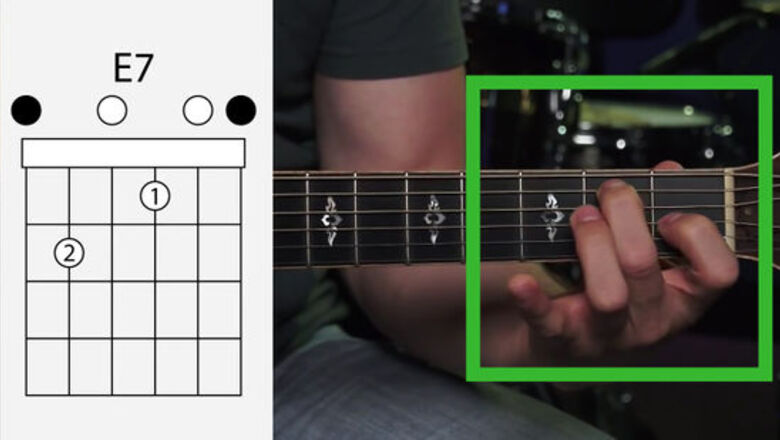
views
Playing E-Form Seventh Chords
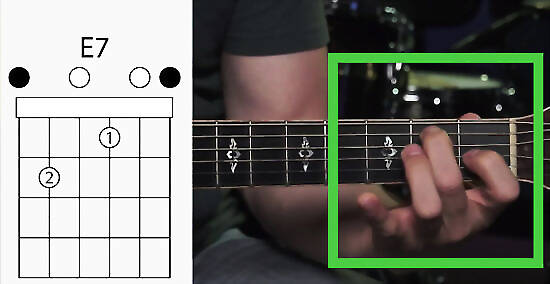
Barre an open E7 chord to move it anywhere across the neck. Dominant Seventh chords are a shape -- one moved across the neck to play different sevenths depending on where you start the chord (your "root" note). When you start a barre chord on the sixth string, is called an "E-form barre chord," since all the shapes are identical to the basic open E chords. If you know how to play an open E7 then you're already halfway to playing any dominant seventh chord you want. In case you need a refresher, here is an open E7: --0-- --0-- --1-- --0-- --2-- --0--
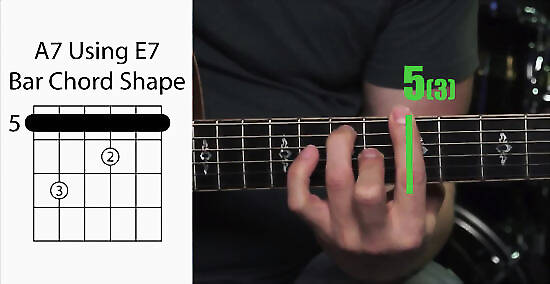
Use your index finger to barre all six strings on the same fret. Start on the fret you want for your chord. If you start on the 5th fret, for example, an A, then your final chord will be an A7. Start on the 3rd fret, a G, and it is a G7. Make sure you have all six strings barred, strumming them all to make sure their are no dead notes or spots. If you were starting a G7, for example: --3-- --3-- --3-- --3-- --3-- --3-- You may have to play with your finger positioning to get a good barre. They require a bit of finger strength, but it is quickly gained with practice.

On the 5th string, place your ring finger two frets away from the barre. No matter where you start your chord, the from will always be the same. If you started on the 3rd fret, for a G7 chord, your ring finger goes on the 5th string, 5th fret. So, when building a G7: --?-- --?-- --?-- --?-- --5-- --3--
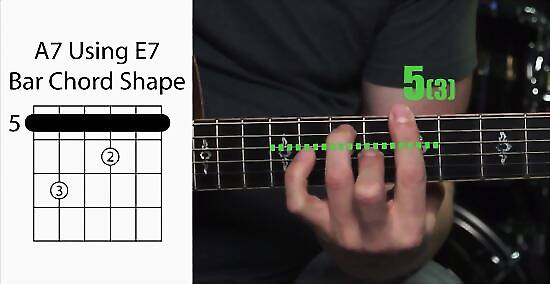
Leave the 4th string barred. You don't need to place a finger down on this fret -- the barred note takes care of it. This note is the titular seventh note for that chord, which is the note making your chord a dominant seventh. Again, if you wanted the G7 barre chord: --?-- --?-- --?-- --3-- --5-- --3--
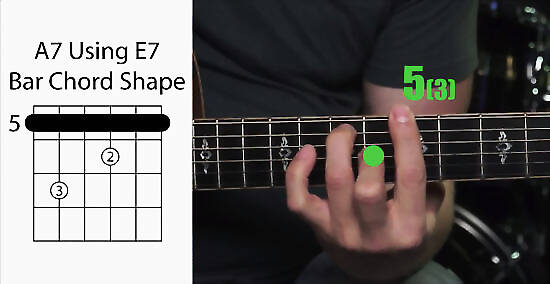
On the 3rd string, play the note one fret after your barre with your middle finger. Again, you'll notice that your ring and middle finger are in the same position as an open E7 chord -- this is because the barre acts as the equivalent of a bunch of open strings, since open and barred strings are both when all six strings are "fretted" at the same place and time. --?-- --?-- --4-- --3-- --5-- --3--
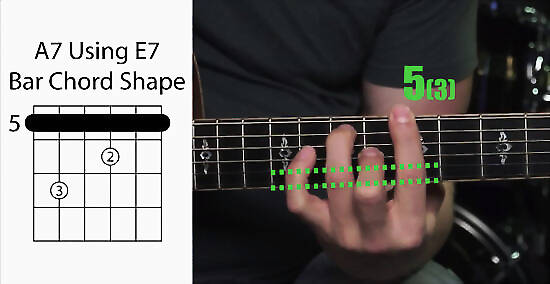
Leave the bottom two strings open. These notes need to stay barred, though they are usually the hardest two notes to get used to holding. Before playing the whole chord, pick them individually to see if they are barred hard enough to sound out cleanly. Adjust as necessary. --3-- --3-- --4-- --3-- --5-- --3--

Play all six strings, and slide the chord around the sixth string to play any seventh chord. Your fingers will always be in this shape, no matter what root note you pick. Move to the 7th fret and you have a B7. Move to the 11th and you have a D#7. The malleability of barre chords makes it easy to quickly craft songs and shift chords with ease. An E-form C7, for example, would look like this: --8-- --8-- --9-- --8-- --10-- --8--
Playing A-Form Seventh Chords
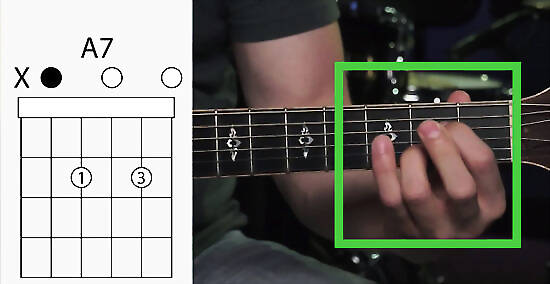
Barre an open A7 chord to play any seventh chord starting on the 5th string. Just as any barre chord on the 6th string is an E-form chord, anything starting on the 5th string is an "A-from barre chord." Again, the shapes all match open A chords, so if you simply barre two frets up from a basic open A7 you can get your barre chord shape anywhere. If you forget the A7, its a simple chord to remember: --0-- --2-- --0-- --2-- --0-- --X--

Barre the lower five strings with your index finger. Wherever this barre starts is the root note. So, this note determines what chord you have -- start on a D, and you have a D7. Start the barre on the 5th string, 5th fret, for example, and you'll have a A-from D7 chord: --5-- --5-- --5-- --5-- --5-- --X--
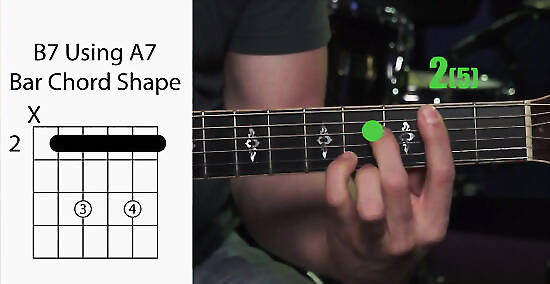
On the 4th string, play the note two frets down from your barre. This is identical to the start of an E-form chord. If you're barring for a D7 (5th fret), then you'll play the 7th fret on the 4th string. --?-- --?-- --?-- --7-- --5-- --X--
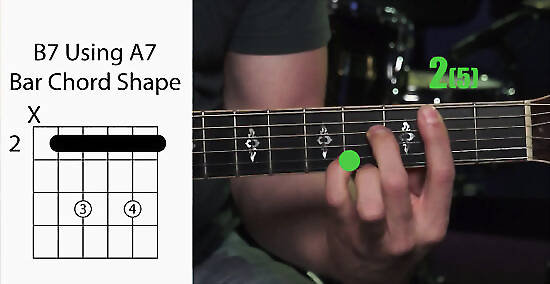
On the 2nd string, play the note two frets down from your barre as well. Skipping the 3rd string (it stays barred), use your pinky to play the note two frets from the barre on the B-string. The lowest string stays barred as well, meaning you've finished the chord. Again, remember that this shape is identical to an open A7, plus the barre. Your final D7 looks like this: --5-- --7-- --5-- --7-- --5-- --X--
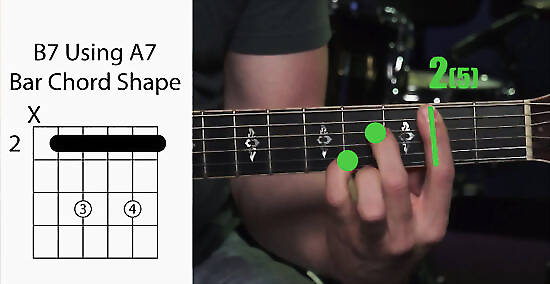
Leaving the final string open, play the lower five strings. Do not strum the top string of the note -- it is an extraneous, low E that will muddy up your sound. However, you now have the A-form dominant seventh chord shape down, and could move it anywhere on the fifth string to play the chord. Start on the 7th string for an E7, for example: --7-- --9-- --7-- --9-- --7-- --X--
Playing Common Open Seventh Chords

Learn the open E7. You just need the same two fingers, in the same orientation, as used for your E-form barre chord. That's it. The open strings form your barre. --0-- --0-- --1-- --0-- --2-- --0--
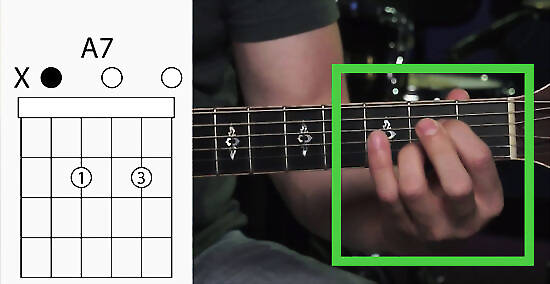
Learn the open A7. Again, this is the same fingering as the A-form barre chords learned earlier. Two fingers go on the 2nd frets of the 2nd and 4th strings. Then you simply play all the strings except the low E. --0-- --2-- --0-- --2-- --0-- --X--

Learn the open G7. A G7 is nearly identical to a G major chord, and if anything is actually easier to play, since you don't need to use your pinky. Set up a normal G chord using your ring and middle finger for the top two notes. Then, instead of your pinky on the 1st string, 3rd fret, place it on the 1st string, 1st fret for a G7. --1-- --0-- --0-- --0-- --2-- --3--

Learn the open C7. Another simple chord, this is actually just a normal C major chord with one note added by your pinky. Set up your open C-major chord like normal, then simply add your pinky on the 3rd string, 3rd fret. You'll have a little triangle shape with the fingers on the 3rd, 4th, and 5th strings: --0-- --1-- --3-- --2-- --3-- --X--
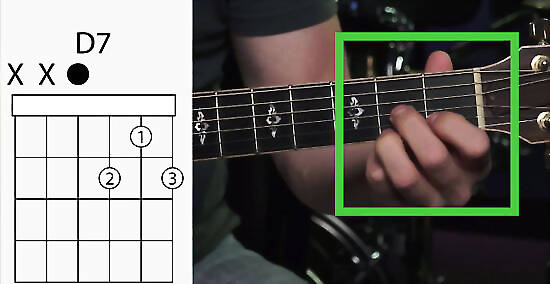
Learn the open D7. The D7 looks just like an inverted D-major chord. You only play the bottom four strings, and the 1st and 3rd strings are identical. But to play the D7, you play the 1st fret on the 2nd string, not the 3rd. As such, you need to switch all your fingers, using the ring finger on the lowest string, then the index, then the middle: --2-- --1-- --2-- --0-- --X-- --X--


















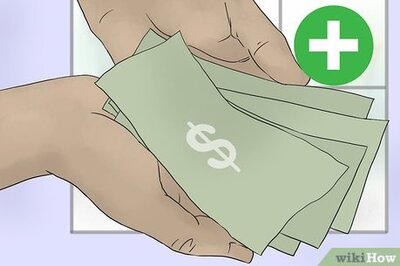

Comments
0 comment